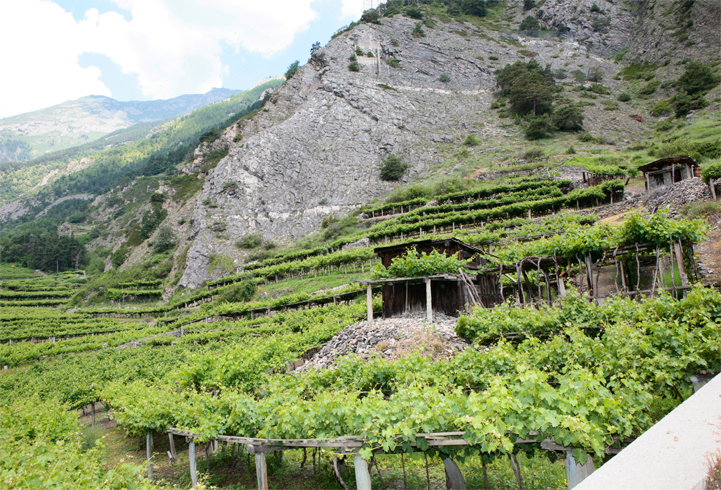
Vintage 2015 Progress Report – Valle d’Aosta
2014 brought one of the most difficult vintages for Italy in living memory, with excessive rain, devastating hailstorms and cool conditions making a big impact. Many grapes struggled for ripeness, making the production of the more profound wines, especially red, somewhat more challenging. One year on, and the vintage couldn’t look any more different to its predecessor.
This year, temperatures soared in July, eclipsing even the legendarily hot 2003. In fact, July 2015 was Italy’s hottest month on record. But, unlike 2003, heavy August rains softened the impact of the heat. This rain, coupled with a resumption of summer sun saw positive growth in the vineyards, and, importantly, an absence of disease pressure.
Our man in Milan reports…
The feeling so far is positive. The heat, while at times at near records, hasn't seemed to worry producers that much, especially in areas with good levels of natural hydric resources. There was some hail damage in Piemonte and Veneto due to summer storms but it was very localised and not wide spread. In some northern regions, Friuli and Veneto, yields will be contained due to damage last year.
…And discusses the vintage with Ermes Pavese, Valle d'Aosta (16/9):
Today's conversation with Ermes Pavese was quite a surprise.
He started picking on 30th August and finished on 6th September. The wines have already finished fermentation – a surprise because his vineyards are among the highest in Europe at 900-1200m above sea level. The lower regions of Valle d'Aosta, around St Pierre and neighbouring zones, only started picking last week, and they are much lower in altitude, around 400-500m, than the vineyards of Morgex and La Salle.
This is a question of climatic anomaly and grape variety
The extreme heat, felt even at 900+m, where Ermes has his vineyards, caused premature ripening. A heavy rainfall on 15th August, with grapes all but mature, resulted in a massive outbreak of fungal disease (grey rot). The result was a harvest with yields up to 50% below average.
Ermes maintains what he was able to harvest was good, and the wines have good acidity. He will not be making any ice wine this year.
The Priè Blanc variety is viable at these altitudes because of its short cycle, as it germinates very late and matures early. At 900m, anything that germinates before April is prone to suffer the severe cold snaps that can happen at these altitudes. Conversely, late ripening brings the same risks. Clearly the heat this year was felt even high up, and the advanced state of maturity early on meant that the summer rains had a disastrous impact.
Many other parts of Italy are already hailing the vintage as potentially great – we will see, it sounds a bit like 1997, which in hindsight was not the great vintage it was hailed to be.
More to come…
- Category:
- Valle d'Aosta,
- Vintage Report,
- Wine
